A poisonous debate
Ragwort. It’s a beautiful yellow-flowered plant which flowers profusely in summer and is food for a myriad of wonderful creatures.
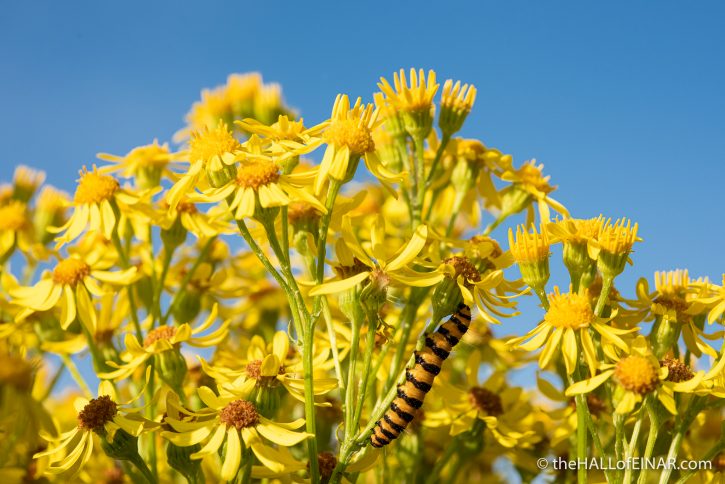
Just look at all those flowers. You can hardly see the raggedy leaves for the excess of yellow petals. There’s a Cinnabar Moth caterpillar munching away at a stem. Can you see it? They are hard to miss, advertising themselves with warning colours of yellow and black hoops. Thirty-five species of insect rely totally on Common ragwort for food including seven moth and seven beetle species.
Of over 7,000 British plant species, Common Ragwort is the seventh most important nectar-producing plant.
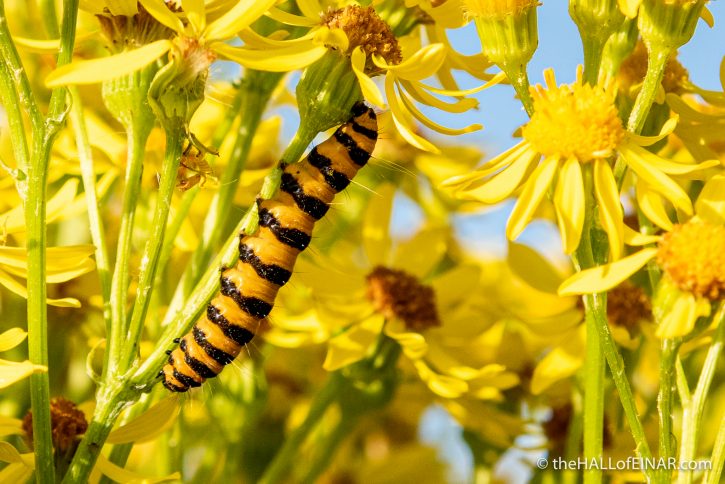
Ragwort is mildly poisonous and distasteful, so it takes special adaptations to live on it. That’s the beauty of the evolutionary arms-race between species. The evolutionary pressure of constantly being eaten means mildly poisonous plants gain a massive advantage.
Horses avoid it – it must smell or taste bad – so they will never eat it. That’s unless you cut it, dry it, mix it and hide it in with other dried food and then give it to them. Or you starve them and leave them nothing else to eat. Then you can poison them with Ragwort. That hasn’t stopped a typical primitive-ape reaction of, “It’s dangerous, let’s kill it,” from farmers and landowners.
The mildly poisonous comments of the rich and powerful also gain advantage in the newspaper arms-race:
Norman Tebbit (referred to as Lord Tebbit, or ‘On your bike’ Tebbit) suggested that pulling up ragwort should be a low-cost form of National Service for “Young people who are not in education, work or training and low-level criminals”. Let them pick weeds. Let’s use worthless peasants to provide pointless wildlife-destroying manual labour for wealthy landowners, shall we? Oh, and while we’re at it, mention young people not in education, work or training in the same breath as low-level criminals, shall we?
Charles Windsor (referred to a Prince Charles, or ‘I have a valet to put the toothpaste on my toothbrush’ Charlie) regularly abuses his position and campaigns for nonsensical countryside issues. His assistant private secretary wrote to ask our Government’s body responsible for the natural environment in England, ‘what exactly, Natural England are able to do to tackle the spread of injurious weeds such as ragwort’.
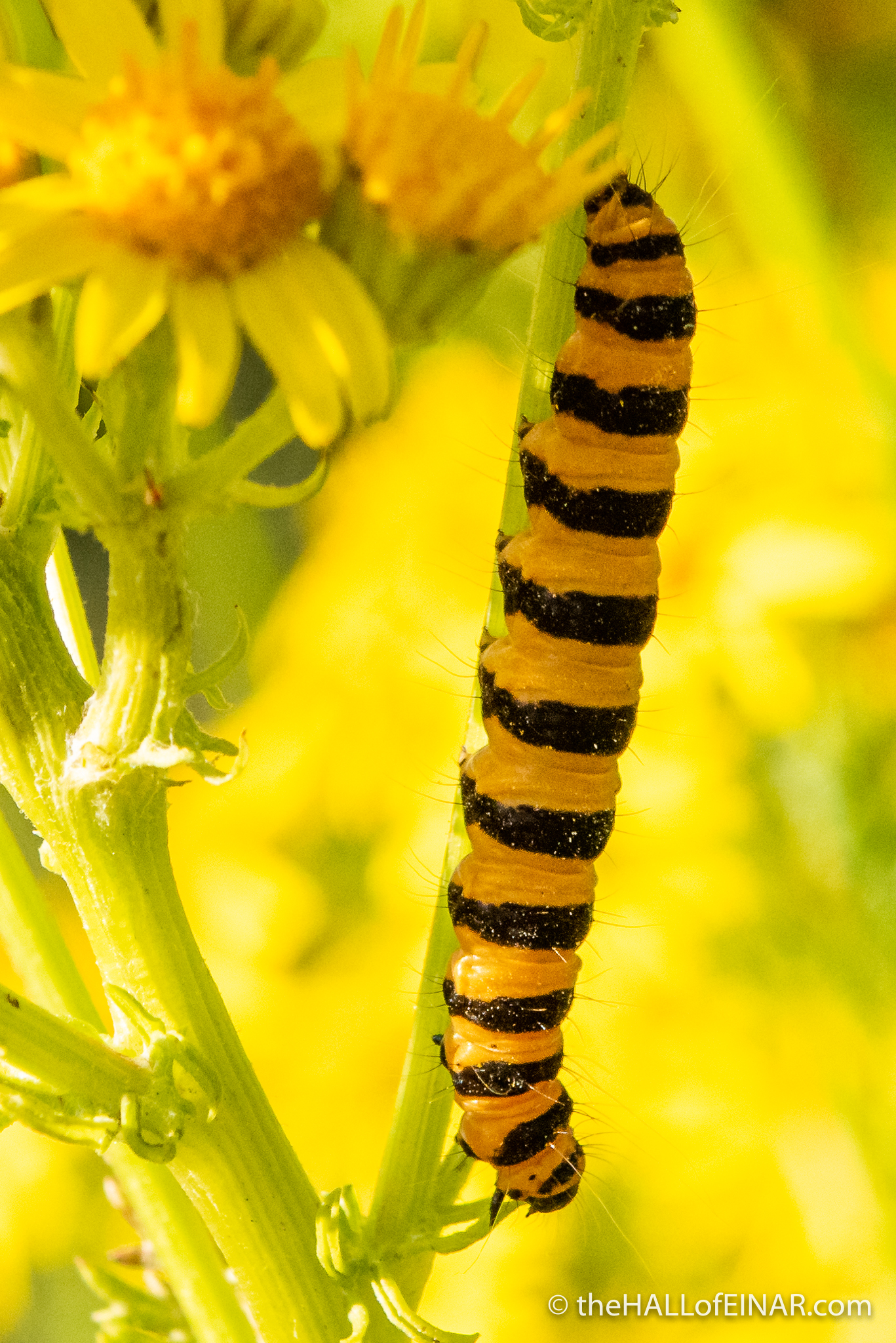
“Injurious weeds”? Ragwort’s an essential part of our natural world. The response? It should have been, “Ragwort is an important natural plant which provides an entire ecosystem with natural resources and should be celebrated by us all. We propose starting a National Ragwort Day, where we celebrate it in stories, songs, verse and art.”
The actual response? “I hope that the contributions to the ragwort issue set out above meet with the approval of His Royal Highness and I will ensure that work to put these into place begins immediately.” The words obsequious, docile, submissive, cringing, slavish, sycophantic, deferential, servile, subordinate, toadying, fawning, grovelling, spineless, cringing, subservient, snivelling, prostrate, sneaking, oily and bootlicking come to mind.
If you don’t want Ragwort to poison your horses, don’t feed it to them. Most cases of poisoning are associated with horse neglect. Cases of cattle being poisoned are often blamed on Ragwort with little or no evidence but are more likely to be caused by toxic mould in the hay fed to them by farmers. It’s against the law to mistreat farm animals or supply toxic feed. It’s much easier to blame it all on a wild flower.
Here’s a Sphaerophoria hoverfly feeding on Ragwort at Boys Hall Moat in Kent:
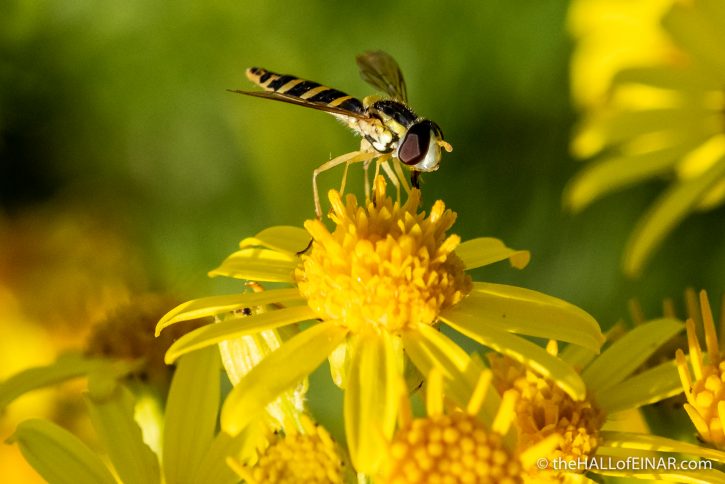
There are many superficially similar yellow-flowered species. Many landowners can’t tell the difference and kill a wide range of others such as Fleabane, Hoary Ragwort and St. John’s Wort. In 2014 the rare Fen Ragwort was sprayed with herbicide on the nature reserve designated a Site of Special Scientific Interest purely to protect the last remaining naturally occurring Fen ragwort population. That’s how ridiculous we’ve become.
Here’s a Gatekeeper Butterfly feeding on Ragwort:
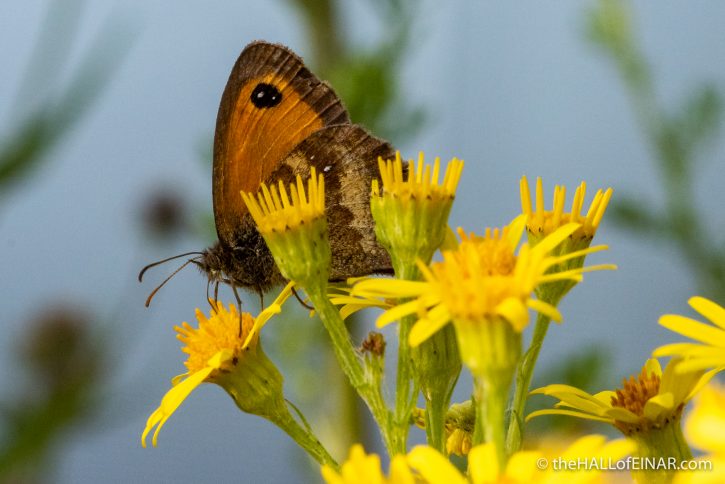
One of the many country names for Ragwort is Stinking Willy. It’s a name better suited to those who campaign against it.